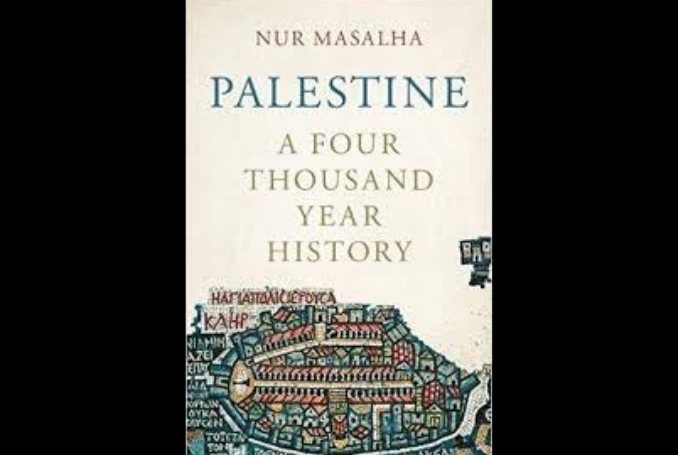
By Jim Miles
(Palestine – A Four Thousand Year History. Nur Masalha. Zec Books, London, 2018.)
The Israeli narrative of a nation/state returning to its homeland after a fifteen hundred year exile required deft work by the David Ben-Gurion initiated Governmental Names Committee (Va’adat Hashemot Hamimshaltit, 1949). The Hebraization of Palestine is described in Nur Masalha’s “Palestine – A Four Thousand Year History” a strong scholarly academic addition to the subject of delegitimization of an indigenous people.
The first part of the book covers the era from the Bronze Age – roughly 2,500 years ago – to the mid-Ottoman era and the autonomous governance of al-’Umar and Ahmad Pasha al-Jazzar. It concentrates its analysis mostly on the name Palestine and its historical precedents in other languages from ancient maps and historical writings. It does provide a few glimpses into the kind of society represented by the name but is mostly concerned with the philology of the name itself.
As the work reaches the Ottoman empire, many more sources are used for reference and provide a much stronger perspective on the lifestyles of the indigenous Palestinian people and a split between the urban elites and the majority living in smaller villages and working the land. In the late Ottoman empire, the early years of Christian Zionism/Orientalism/Biblicism, and in the early years of European based secular nationalist Zionism, more diverse sources are used to emphasize the denial of the indigenous Palestinians through language usage.
Masalha’s theme is simple: to demonstrate the existence of Palestine through the centuries by studying the language used, its reference in historical works, and how the modern Hebraization brought on by the western Christian Biblical traditions combined with the Zionist enterprise attempts to deny the existence of Palestine and its people. From that thesis he succeeds remarkably well, providing strong references of the use of the word Palestine up to and including Israeli usage after the 1948 Nakba. But well before that, the Orientalist Christian perspective had already begun the assault on Arabic/Palestinian historical geographic names previously supported by earlier works.
As the study continues into the modern era, many devices are used to erase and cover over any sign of Palestinian geographic inheritance. Much of the initial changes in western knowledge were brought about by various biblical study groups searching for archeological evidence for their story. When not finding much of that evidence, biblical names were simply appropriated and used for different regions, down to specific geographic features. This latter methodology was continued by the early Jewish settlers and strongly reinforced after the creation of Israel.
Appropriation of Arabic names occurred through the process of alliteration, finding – or even inventing – a Hebraic word resembling the Arabic word. A similar process was used for personal names of the Jewish European settlers by choosing a Hebrew word or as frequently an appropriated Arabic word to create a new patronymic.
One of the strongest methods is simply erasure. This occurred before, during and after the Nakba as many villages were physically destroyed, many others expropriated, and most being renamed using some form of Biblical/Hebraic names. Erasure continues both geographically and culturally ranging from street signs to educational texts and instructions.
From the general trend of Masalha’s presentation, modern Hebrew is a contrived language, based on a confined liturgical element incorporating by necessity many modern terms, many Arabic/Palestinian terms, and many biblical terms rendered into a semblance of an ancient Hebraic language. It also clearly demonstrates a history of a region called Palestine at the geographical crossroads of ancient and modern history, surviving under various rulers, some with more autonomy than others, but distinctly Palestinian.
Further, while not denying the existence of an Israeli entity, it is seen as an ongoing part of many different peoples and cultures that inhabited the area at one time or another. The Israeli myth of a sudden influx of Arabs during the Muslim conquests is compared to the historical record of a gradual introduction of Arabic ideas and peoples into the region before the conquest. Of note as well are the frequent references to the peaceful mixing and coexistence of the three major religions in the more modern landscape before the advent of the Orientalist Christian Zionism began to usurp the region.
Unfortunately for all that, “Palestine – A Four Thousand Year History” has a problem that does not deny its academic argument. The work for the purpose of spreading this information to the general public is far too scholarly and academic, something I can work through because of my background reading and my intentions as a reviewer, but would prove very difficult to attract attention to a general reader.
The first section in particular, while referencing many maps using the word Palestine or its linguistic equivalents, does not provide any visuals – no maps. A reference section with some plates showing the range of maps from ancient histories through to the British maps of Mandatory Palestine would be a valuable addition to the work.
Having said that, I must reiterate that his arguments support the main thesis very well. The latter half of the book both instructs this thesis and at the same time provides a more reader-friendly discussion of not only the geography but the essence of the people of Palestine.
– Jim Miles is a Canadian educator and a regular contributor/columnist of opinion pieces and book reviews to Palestine Chronicles. His interest in this topic stems originally from an environmental perspective, which encompasses the militarization and economic subjugation of the global community and its commodification by corporate governance and by the American government.
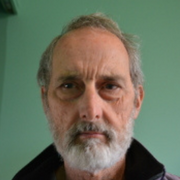
– Jim Miles is a Canadian educator and a regular contributor/columnist of opinion pieces and book reviews to Palestine Chronicles. His interest in this topic stems originally from an environmental perspective, which encompasses the militarization and economic subjugation of the global community and its commodification by corporate governance and by the American government.

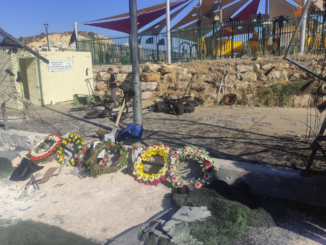
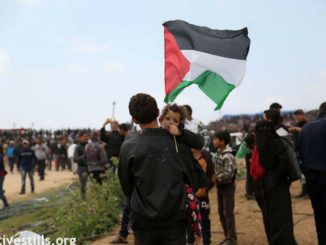
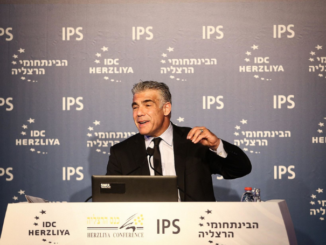




Berra means sinless and inpeccable. Also a jewish surname. United kingdom Berra family which is a jewish group. This biggest financial group is also a partnership of global holding. I suppose Yogi is relative with this family but not close. Especially, new cfo and representavies of group ex; (Sandy Berra and D.Benjamin Berra ) is known with their affinities in u.k government and Theresa May.